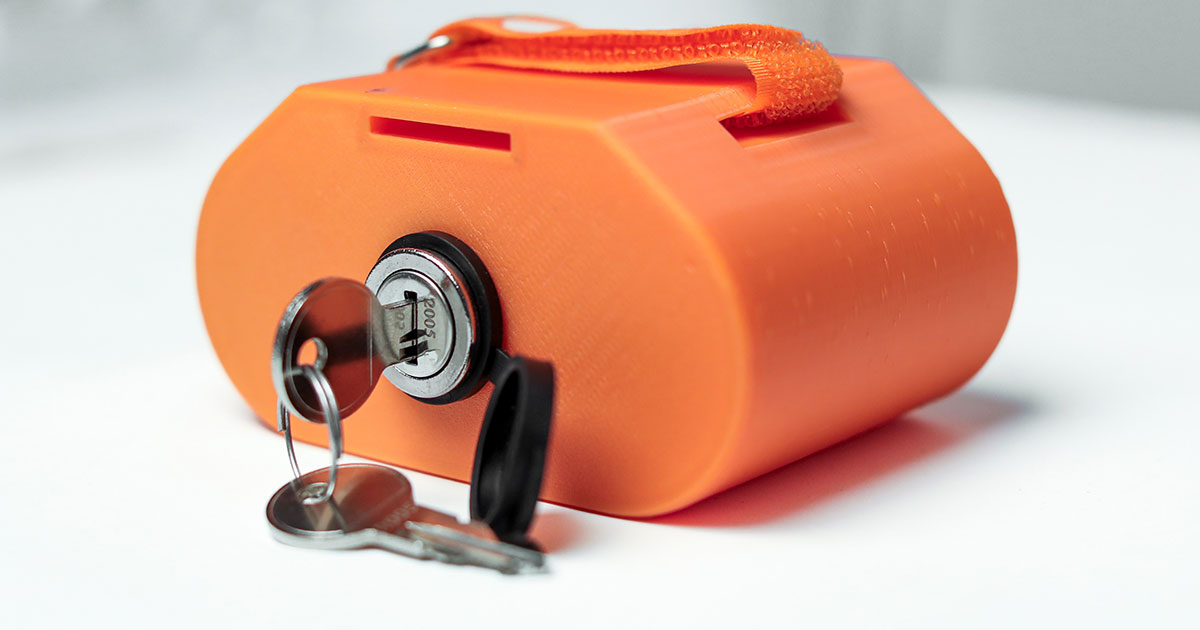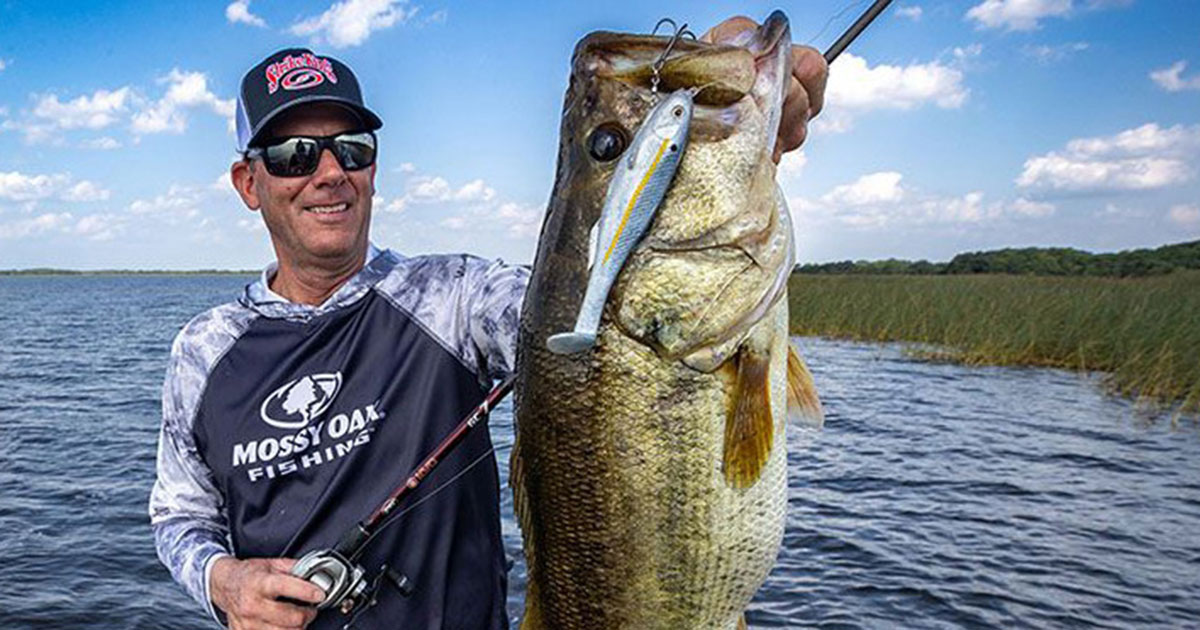- Details
MLF Report

Major League Fishing (MLF) has unveiled a new lock box, designed and manufactured by Precision Sonar, that will support new rules limiting anglers to the use of two forward-facing or 360-degree sonar transducers during competition. The innovative, simple-to-use device will be provided free to all anglers who need to lock out excess transducers during competition.
Link to Hi-Res Photos of Lock Box from Precision Sonar device
Link to Video demonstrating use of Lock Box from Precision Sonar
- Details
By Louie Stout
 Kevin VanDam
Kevin VanDam
Tuesday kicks off a special day for Michiana’s wintertime armchair anglers.
That’s when you get to see back-to-back episodes of the new Kevin (KVD) VanDam “VanDam Experience” and Mark Zona’s “Zona’s Awesome Fishing Show” (ZAFS) on the Outdoor Channel.
Both TV hosts are from southwest Michigan, with KVD from Kalamazoo and Zona from the Sturgis area.
You can bet there will be several shows from both anglers that will be aired over the coming weeks that were filmed on waters of interest to Michiana bass anglers.
Zona’s show, which has reigned as the highest rated freshwater TV show for the past few years, kicks things off at 12:30 p.m.
VanDam, who retired from pro tournament fishing after an illustrious career, will debut his “VanDam Experience” immediately afterwards at 1 p.m.
Both shows will be repeated throughout the week with new episodes coming for the next 13 weeks. Zona will air each Tuesday, Friday at 5 p.m. and again Sunday at 8:30 a.m.
You also can find Zona’s show on the World Fishing Network (WFN) Monday through Saturday at 11:30 a.m.
VanDam’s show will air each Thursday at 6:30 p.m. and 10:30 p.m. and Friday at 12:30 p.m. and Sunday at 8 a.m., prior to Zona’s airing.
VanDam says his show will center on teaching bass fishing in real fishing conditions from Texas to Florida and include some smallmouth shows from the north.
“My show isn’t about going out and catching a lot of five pounders, although there are some big ones caught during the filming,” he explains. “It’s about how to put together the puzzle of finding and catching fish. It’s a science, yet one that is far from exact. I’ll showcase techniques, lures and a style that I have been successful with throughout my tournament career.”
Interestingly, KVD’s first show was filmed with Zona on Lake St. Clair. He also will do shows with country music star Luke Bryan.
“It’s a tremendous honor to be Kevin’s first guest,” says Zona. “I expect his show to teach viewers what he’s kept behind the curtain over the years. He’s one of the best instructors and teachers in bass fishing; that’s what I want to see from him and I think we will.”
 Mark Zona
Mark Zona
Zona’s first show will have your heart pumpin’ with some frog action in Minnesota. He’ll do several shows alone this year, including the first one. He’ll also be doing shows with Michiana’s Neil Vande Biezen and Bassmaster Elite Series Pro Seth Feider.
The second show, which includes Feider, offers a trip to St. Clair a week after ice-out.
“There was snow in the parking lots, no boats and water temperature was 38 degrees,” Zona says. “We caught 150 bass.”
Both VanDam and Zona say they will try to balance their programing with the use of today’s technological equipment and some good ol’ fashioned old-school fishing.
“My focus will be to stay ahead of the bites and lakes that haven’t been exposed,” says Zona. “That’s hard because there aren’t a lot of secrets, but we’ve found a few.”
VanDam says the transition from competitive fishing and TV has provided similar challenges. He’s producing the show on his own.
“There’s still a lot of pressure,” he says. “When I leave to go film with a crew, the meter is running and we’re dependent on Mother Nature. We try to schedule to be at the best lakes at the best time, but oftentimes you’re dealing with changing and adverse conditions. I actually love that part of it.”
- Details
Mercury Report
 Mark Zona
Mark Zona
Since he was a kid, Mercury Pro Team member Mark Zona has been obsessed with teasing bass from beneath boat docks. To this day, skipping a lure into the darkest shadows of the dock shade is a thrill he relishes.
“When you go poking around in the lion’s den, you might just tangle with a lion,” Zona said with a laugh. “You must put the lure in the beast’s lair to tickle his ribs for a reaction.”
The host of “Zona’s Awesome Fishing Show” still vividly remembers wading the shallow banks of small Michigan lakes near where he grew up, targeting his favorite boat docks. Wade-fishing provided a unique perspective of docks at water level, allowing him to observe bass relating to the structures.
“Wading was my primary bass fishing education,” Zona added. “Being so low to the water, I could skip way back into the hardest-to-reach places. That taught me that getting to the right places was key in getting bit by bigger bass.”
Zona admits that skipping prowess is more challenging from a boat but very rewarding when the perfect skip-cast produces a chunky bass that no one else can reach.
How bass use docks in every season
After years of chasing bass across the country, Zona has found docks to be reliable fish producers all year because they provide everything bass need: cover, food, ambush points and spawning grounds.
“If a lake has docks on it, bass are relating to them,” Zona said. “It does not matter where, when or even what kind of docks they are. Bass use docks. Period.”
In the early spring, docks offer staging areas for the prespawn period. Bass suspend around poles, pilings and cables as they acclimate to warming water. When the spawn begins, bass move to the backsides of docks to seek the security of cables and catwalks. After the spawn, docks provide a haven for bass fry. As the water warms up, shad and bream also gravitate toward docks. This is like a food delivery service for postspawn bass.
How to fish docks in every season
“For me, a dock is basically a large strike zone,” Zona said. “Fish enough strike zones and you’re going to get bites. It’s the law of averages. In doing so, you can use docks as a barometer for what the fish are doing: spawning, guarding fry, wolfing shad or eating bluegills. One thing is for sure: Dock bass tattle on their neighbors; catching one from a dock is a solid clue as to what the others are doing.”
In the colder waters of early spring, Zona targets the fronts of the docks, closer to deeper water. As the waters warm during a fishing season, he focuses his fishing efforts on shallower parts of the docks. By summertime, he moves up to target the shallowest parts of the docks where they connect to the bank.
He notes that many anglers steer clear of docks in the summer because of all the swimming and boating activities around them. They think all that commotion scares the fish away.
“I can assure you that activity doesn’t bother bass one bit,” Zona added. “I have watched them eat my lure with people stomping all around on the docks.”
How to skip a dock with a spinning reel
Zona advises anglers who want to learn the dock-skipping game to start with a spinning outfit. The spinning reel offers much better line control and eliminates the possibility of backlashes, which are more common with baitcasters. Load the spinning reel with 15- to 20-pound-test braided line and tie on a fluorocarbon leader.
Weightless or lightly weighted baits like wacky rigs, Neko rigs and shaky heads are perfect for skipping beginners. He prefers a 7-foot rod. Anglers taller in stature might have to go with a rod that’s a few inches longer to swing the lure closer to the water’s surface.
“The most critical element to look for in a good skipping rod is a fast action with a soft tip and quick backbone,” Zona said. “The tip must be limber in the first 15 to 20 inches to load the bait properly – almost like a slingshot.
“Loading the tip correctly is the key to accuracy and skipping the bait efficiently,” he continued. “The tip should be limber but then transition quickly into a strong backbone for hooksets. The moderate action of a slower rod is too parabolic to get the job done.”
To practice skip-casting without any pressure, Zona suggests getting into a calm pocket and skipping a lure over smooth, open water without docks around. In time, you’ll get a feel for the correct “whipping action” to load the rod tip and then time the release to send the lure low across the water’s surface.
“Don’t force it,” he said. “It’s like skipping stones across the water. It’s not how hard you throw it that counts. It’s how low and parallel to the surface the lure gets that determines how well the lure skips. In time, you get a feel for where that sweet spot is in your skip-cast. As skipping becomes a little easier, test your trajectory on docks to see how low you can go.”
How to skip a dock with a baitcaster
Once confidence has been established skipping docks with a spinning rod, it’s time to graduate up to casting gear for skipping heavier lures such as jigs and hollow-bodied frogs. Due to the free-spooling nature of casting reels, they are prone to backlash in a split second.
“If you keep blowing your reel up like a haystack when trying to skip-cast with a casting reel, be patient,” Zona said. “Trust me, this takes time to learn. One thing that will help is a shallow-spool reel designed for skipping – like the Team Lew’s Pro SP. Also, when first starting, try turning the backlash control, or brakes, up higher to keep backlashes under control. As you get better at it, you can ease off the brakes and let the line flow off the spool for better distance.”
Zona’s favorite skipping bait on a casting rod is a 1/2-ounce Strike King Structure Jig teamed with a Strike King Rage Craw, tied to 20-pound-test Seaguar Tatsu fluorocarbon.





